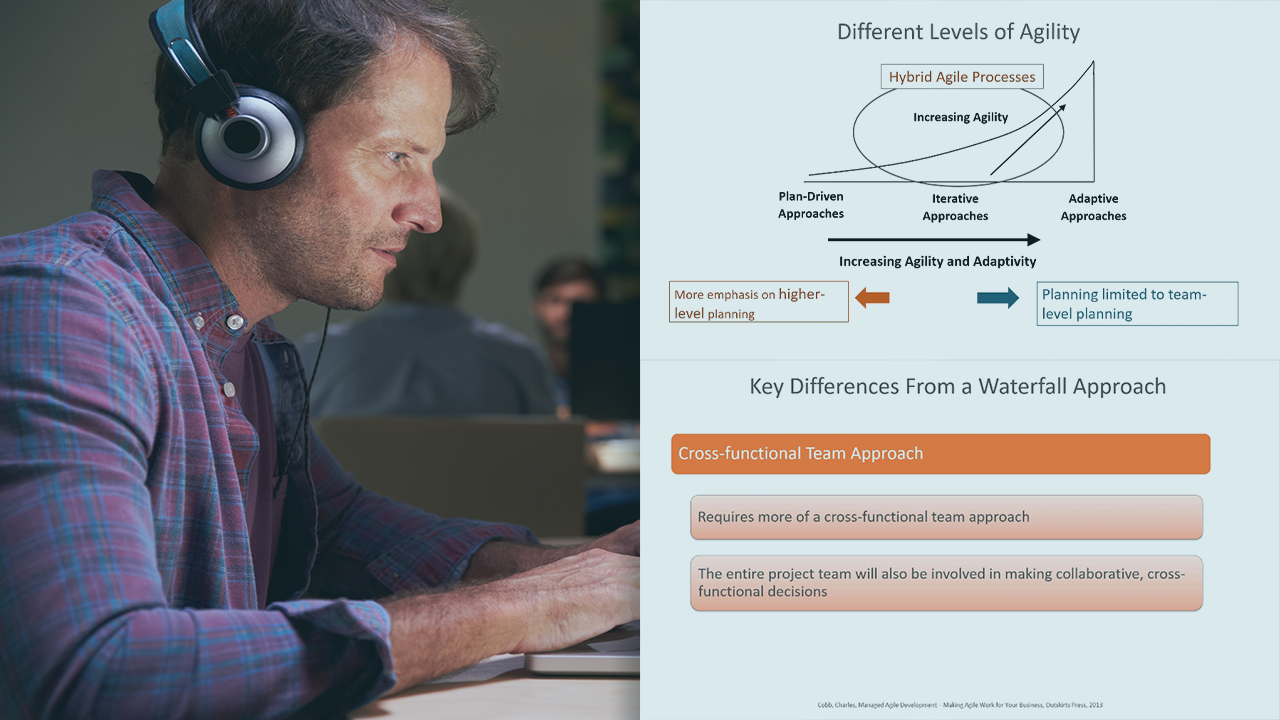- Course
Understanding Hybrid Agile Project Management
Learn how to blend Agile and traditional project management approaches in the right proportions to create a hybrid approach to fit any given situation.

- Course
Understanding Hybrid Agile Project Management
Learn how to blend Agile and traditional project management approaches in the right proportions to create a hybrid approach to fit any given situation.
Get started today
Access this course and other top-rated tech content with one of our business plans.
Try this course for free
Access this course and other top-rated tech content with one of our individual plans.
This course is included in the libraries shown below:
- Core Tech
What you'll learn
Many people try to force-fit projects to either a pure Agile or a pure Waterfall approach because they don't realize that it is possible to create a hybrid Agile approach that provides the best of both of those two worlds. In this course, Understanding Hybrid Agile Project Management, you will gain the ability to learn how to create a hybrid Agile project that has the right blend of flexibility and adaptivity from an Agile approach as well as some amount of planning and control from a traditional plan-driven approach. First, you will learn about Empirical Process Control models and Defined Process Control models, how they are different, and the advantages and disadvantages of each. Next, you will discover how to effectively manage uncertainty in a project which is probably the most important factor in selecting the right approach. Finally, you will explore some frameworks and examples of how to put these ideas into practice in the real-world. When you are finished with this course, you will have the skills and knowledge of Hybrid Agile Project Management needed to understand how to fit a hybrid Agile approach to the nature of any project.

